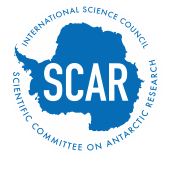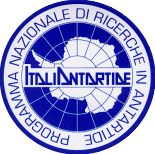|
Name ID: 100023
Place ID: 106
Es la punta E de la península Kenyon, costa E de la península Antártica. El cabo fue descubierto en 1940 por la Expedición del Servicio Antártico de los EE.UU. que lo denominó Joerg en recuerdo de un naturalista norteamericano, quien noblemente solicitó al Comité norteamericano para el Asesoramiento de la Toponimia Antártica, que lo cambiara por el del Dr. Luis Agassiz (1807-73) geólogo y naturalista suizo autor de "Estudio sobre los glaciares". El topónimo figura en la relación toponímica enviada por el SIHN al Ministerio de Relaciones Exteriores en julio de 1959. No obstante, había figurado en la carta N"P"-1 del año 1952 y con posterioridad en TSAA1. SHN carta H-7.
|
|
Name ID: 105062
Place ID: 106
Fue descubierto en diciembre de 1940 por el Servicio Antártico de los Estados Unidos, recibiendo el nombre de cabo Joerg, por el apellido de W.L.G. Joerg, geógrafo y especialista polar, a solicitud de quien, el Comité Asesor de Nombres Geográficos de los Estados Unidos de Norteamérica lo redenominó cabo Agassiz, por el apellido de Louis Agassiz, geólogo y naturalista de origen Suizo que enunció por primera vez la teoría de la glaciación continental. Cabo que marca el extremo oriental de la península Hollick Kenyon, en la costa oriental de la península Tierra de O'Higgins.
|
|
Name ID: 107462
Place ID: 106
E end of Kenyon Peninsula (q.v.) dividing Bowman Coast from Wilkins Coast, following air photography by USAS in December 1940 was called Cape Joerg, after W.L.G. Joerg (Joerg Peninsula, q.v.) (USAAF chart [LR-74], 1942); named at Joerg's request Cape Agassiz, after Jean Louis Rodolphe Agassiz (1807-73), American naturalist and geologist of Swiss origin, who first propounded the theory of continental glaciation in Études sur les glaciers (Neuchâtel, 1840) (USBGN, 1947, p. 128; BA chart 3175, 12.xi.1954; [in 68 30'S 62 58'W] APC, 1955, p. 4; [co-ordinates corrected] DOS 610 sheet W 68 62, 1963; APC, 1986, p.3); surveyed from the ground by FIDS-RARE, 1947-48 (Mason, 1950a, p. 150 and map facing p. 151). Cabo Agassiz (Argentina. MM chart N- P -1, 1952; Pierrou, 1970, p. 149; Chile. IHA, 1974, p. 19). Kap Agassiz (Kosack, 1955a, end map). Cap Agassiz (France. SHM chart 5879, 1956). Mys Agassiz (Soviet Union. MMF chart, 1961). Mys Agassi (Soviet Union. AA, 1966, Pl. 24).
|
|
Name ID: 121615
Place ID: 106
The E tip of Hollick-Kenyon Peninsula, a narrow ice-drowned spur extending E from the main mountain axis of Antarctic Peninsula between Mobiloil and Revelle Inlets. The cape is the E end of a line from Cape Jeremy dividing Graham and Palmer Lands. Discovered in December 1940 by the USAS who named it for W.L.G. Joerg, a geographer and polar specialist. At his request it was named by the US-SCAN for Louis Agassiz, an internationally famous American naturalist and geologist of Swiss origin, who first propounded the theory of continental glaciation (Etudes sur les Glaciers, Neuchatel, 1840).
|

